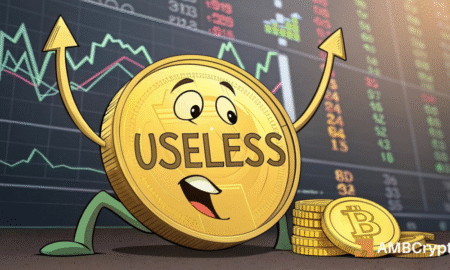Bitcoin Recovery: Analyzing Macro Indicators and Investor Behavior
Bitcoin (BTC) has experienced a significant downturn recently, marked by an 18% drop from a high of $126,000 to approximately $103,000 since October 6. As the leading cryptocurrency remains within a bearish trend, macroeconomic indicators and investor behaviors are raising questions about a potential recovery. Understanding these elements is crucial for investors looking to navigate the turbulent waters of the Bitcoin market.
Understanding Market Indicators
Current macro indicators paint a more optimistic picture for Bitcoin’s future. The Financial Stress Index (FSI), which assesses overall market stress, is reported to be below zero. This indicates a low level of market stress and suggests that a short-term rebound could be on the horizon. Many analysts emphasize the importance of macroeconomic factors as they can dictate whether a bear market has commenced or if a rebound is plausible. The FSI’s performance, alongside the Financial Stress Delta, is a vital measurement that could forecast Bitcoin’s movement in the upcoming days.
Bitcoin’s Correlation with Macroeconomic Conditions
Bitcoin’s historical patterns show a strong correlation with the S&P 500, a primary indicator of broader market conditions. Both assets often move in tandem, particularly in response to significant economic events, making them sensitive to macroeconomic changes. Analysts have pointed out that the S&P 500 is a useful proxy for predicting Bitcoin’s trajectory. The underlying sentiment evident in these macro indicators is crucial for discerning the vitality of Bitcoin’s current phase and potential future movements.
The Role of the U.S. Dollar
Another vital factor influencing Bitcoin is the performance of the U.S. dollar, often measured through the Trade-Weighted U.S. Dollar Index. A stronger dollar tends to tighten market liquidity, which can negatively impact Bitcoin prices, while a weaker dollar generally boosts liquidity and supports asset prices. Currently, market signals indicate a calm atmosphere, implying there is no urgent risk of a downturn. However, traders must remain vigilant regarding these dollar indicators, as they have the potential to shape Bitcoin’s short-term market behavior.
Divergence Between Retail and Institutional Investors
A clear split exists between retail and institutional investors regarding Bitcoin’s immediate future. Retail investors have been actively buying Bitcoin, acquiring about $1.66 billion worth between October 13 and 17 alone, moving it into private wallets. This aggressive purchasing behavior highlights a bullish outlook among retail traders, suggesting they anticipate a short-term rally. Conversely, institutions have been offloading Bitcoin, with approximately $1.23 billion worth sold back into the market during the same timeframe. This divergence could create a bullish momentum if retail buying pressure persists.
Short-Term Outlook: Retail Momentum
The current investor landscape illustrates a precarious balance. Retail investors, buoyed by optimistic market sentiment, have absorbed much of the liquidity released by institutional sellers. If retail momentum continues to strengthen, it could lead to a resurgence in Bitcoin prices. However, should this momentum wane, the possibility of Bitcoin sliding further down the charts remains a concern. Therefore, continuously monitoring retail purchasing activity will be crucial to forecasting Bitcoin’s trajectory in the near term.
Conclusion: The Path Forward for Bitcoin
In summary, while recent trends showcase a bearish Bitcoin market, macroeconomic indicators and retail behavior suggest the potential for recovery. The favorable reading from the Financial Stress Index, the relationship with broader economic indicators, and robust retail purchases could signify a turning point for Bitcoin. However, the ongoing divergence between retail and institutional investors makes it imperative for traders to stay informed about market dynamics. Keeping an eye on these factors could help navigate the uncertainties of the Bitcoin landscape in the coming weeks.
By understanding macroeconomic indicators and the interplay between retail and institutional behavior, investors can gain insights into Bitcoin’s next movements, providing them with the tools to make informed decisions in this volatile market.
















